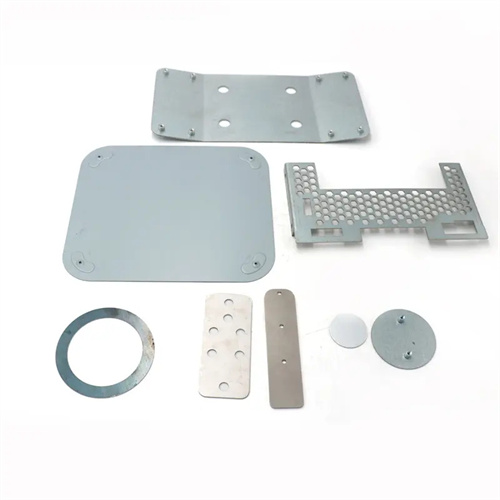Electrical copper flat wire
Electrical copper flat wire is a high-precision copper conductor with a rectangular or flat cross-section. It is widely used in the winding manufacturing of electrical equipment such as transformers, motors, and reactors. Its excellent conductivity and formability make it a core material for high-end electrical equipment. Specifications range from 4 to 100 mm in width and 1 to 15 mm in thickness, and can be customized based on the power and space requirements of the equipment. Materials typically used are T2 and T3 copper or copper alloys such as Cu-Ag and Cu-Cr-Zr. Pure copper flat wire emphasizes high conductivity, while alloy copper flat wire balances strength and heat resistance, enabling long-term, stable operation under diverse operating conditions.

The production of electrical copper flat wire requires multiple precision steps, including raw material purification, hot-rolling, cold-rolling, annealing, and surface insulation. First, electrolytic copper with a purity of at least 99.95% is selected and fire-refined to remove harmful impurities such as lead and bismuth, raising the copper purity to 99.99% and ensuring optimal conductivity. The copper ingots are then heated to 800-900°C in a hot rolling mill and rolled into slabs with a thickness of 10-30 mm. During the hot rolling process, the reduction and rolling speed are controlled to prevent scale and cracks. Cold rolling is a key step in determining dimensional accuracy. A multi-roll cold rolling mill performs multiple passes, with a reduction of 10%-20% per pass. The slabs are gradually rolled to the target dimensions, ensuring a width tolerance of ≤±0.05 mm, a thickness tolerance of ≤±0.03 mm, and a surface roughness of Ra ≤0.8 μm. Flat wires that require bending and winding require bright annealing. Under nitrogen, they are heated to 400-500°C, held for 2-4 hours, and then slowly cooled. This reduces the material’s hardness to HV80-100 and increases its elongation to over 30%, meeting the requirements for winding formation. Finally, depending on the insulation grade, an insulating layer is applied using varnishing, wrapping, or extrusion. For example, polyimide enamel coatings can withstand temperatures up to 220°C, meeting the requirements for use in high-temperature motors.

The performance advantages of electrical copper flat wire make it irreplaceable in high-end electrical equipment. First, it offers excellent electrical conductivity. The conductivity of T2 pure copper flat wire can reach over 97% IACS , significantly higher than that of aluminum and aluminum alloys. This effectively reduces winding losses and improves equipment energy efficiency, particularly in high-voltage transformers, where it can reduce no-load losses by 10%-15% . Second, it offers excellent mechanical properties. The annealed copper flat wire exhibits excellent plasticity and toughness, allowing it to withstand repeated bending and stretching without breaking. The minimum bend radius can reach 1.5 times its thickness, facilitating the winding of complex shapes. Third, it offers outstanding heat dissipation. Copper has a high thermal conductivity of 398W/(m · K) , quickly transferring heat generated by the winding to the cooling system, reducing equipment temperature rise and extending its service life. Fourth, it offers high dimensional accuracy. Through precision cold rolling and online testing, the flat wire’s cross-sectional dimensions are highly consistent, allowing it to be tightly packed within the core slots. This allows for a winding fill factor exceeding 85%, reducing equipment size. Fifth, it offers stable corrosion resistance. The oxide film formed on the copper surface resists atmospheric and dry corrosion, ensuring long-term performance stability in enclosed electrical equipment.

Across various applications, electrical copper flat wire is a core component of high-end electrical equipment. In power transformers, high-voltage transformers of 220kV and above almost exclusively utilize copper flat wire for their windings. For example, the low-voltage windings of 500kV transformers often utilize T2 copper flat wire with a width of 60-80 mm and a thickness of 8-12 mm. This multi-layer winding allows for high current transmission. In new energy vehicle drive motors, flat wire motors have become mainstream due to their high fill rate and efficiency. Using enameled copper flat wire with a width of 3-6 mm and a thickness of 1-2 mm increases motor power density by over 30%. In wind turbines, stator windings utilize weather-resistant copper flat wire, designed to withstand humid outdoor environments and guarantee a service life of over 20 years. In rail transit traction converters, reactor windings made of copper flat wire can withstand high-frequency, high-current surges, ensuring stable operation of train traction systems. As electrical equipment evolves towards higher efficiency and miniaturization, the application of copper flat wire in nuclear power and ultra-high voltage applications continues to expand.

Industry trends indicate that electrical copper flat wire is moving towards thinner, higher-strength, and composite insulation. To meet the demand for miniaturized motors, breakthroughs have been made in the development of thin-gauge copper flat wire, enabling widths as small as 2 mm and thicknesses as small as 0.5 mm. Precision rolling and die technology enable stable production. High-strength alloy copper flat wire, such as Cu-Cr-Zr alloy, boasts a tensile strength exceeding 400 MPa while maintaining a conductivity of 90% IACS, making it suitable for vibrating environments such as high-speed motors. Composite insulation technology combines an organic insulating layer with an inorganic ceramic coating, increasing its temperature resistance to over 250°C, meeting the requirements of high-temperature equipment. Furthermore, the promotion of green production technologies, such as chromium-free passivation and water-based insulating varnish, reduces VOC emissions and increases copper recycling rates to over 95%. With the development of new energy and high-end equipment industries, demand for high-performance electrical copper flat wire will continue to grow, driving the industry to achieve greater breakthroughs in material research and development and process innovation.
